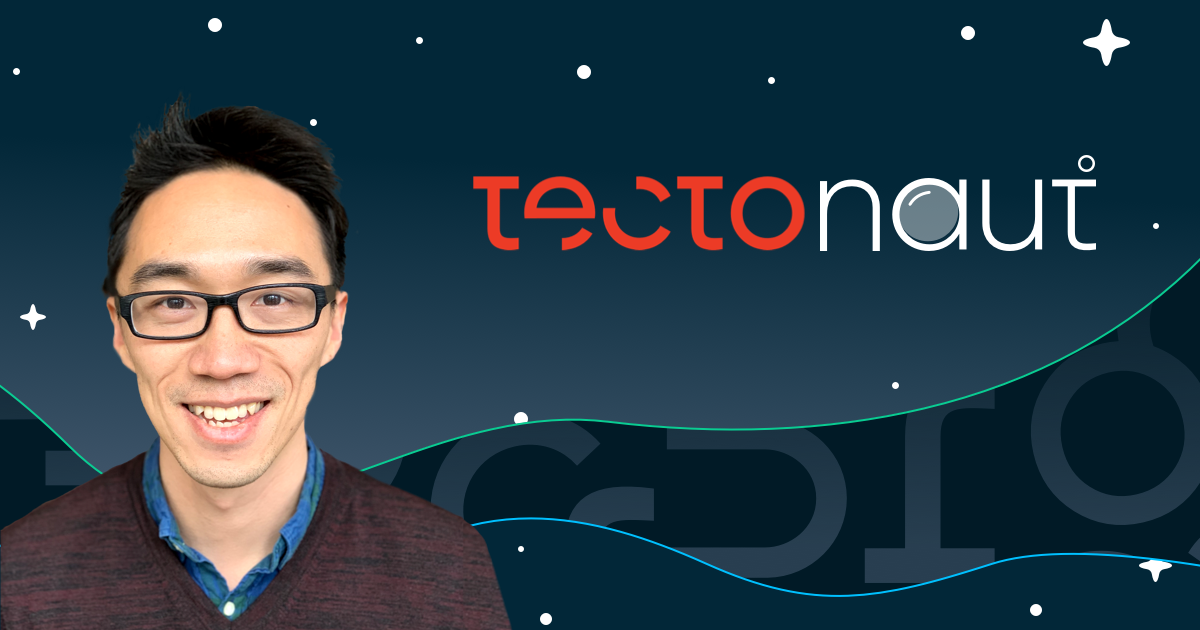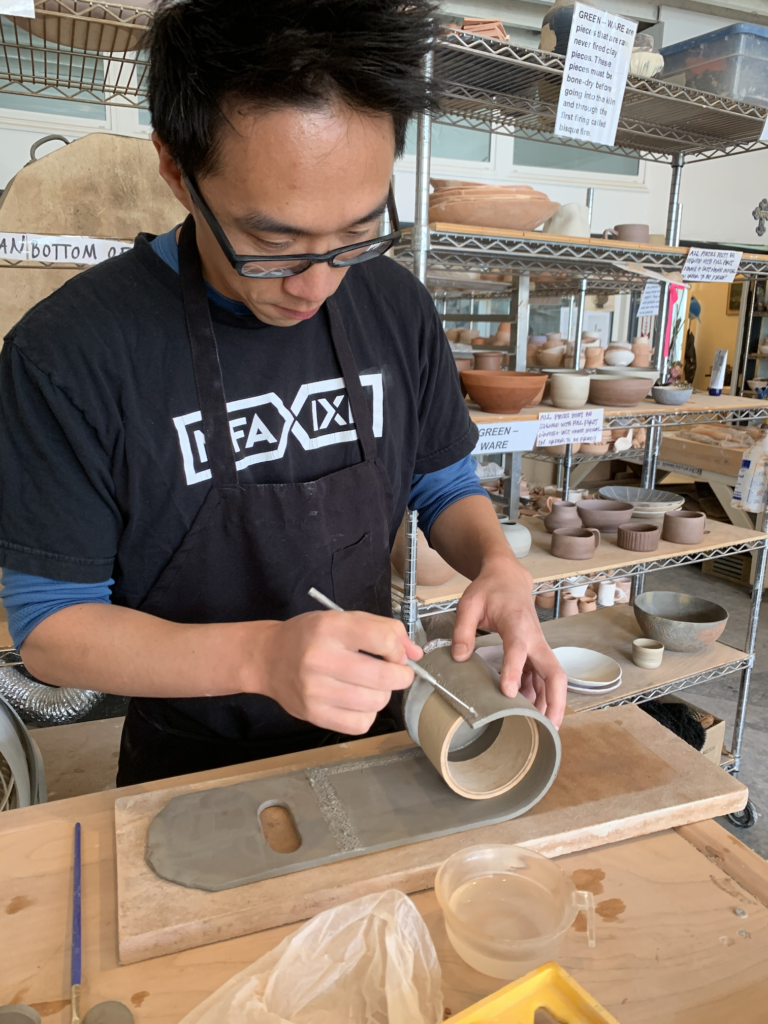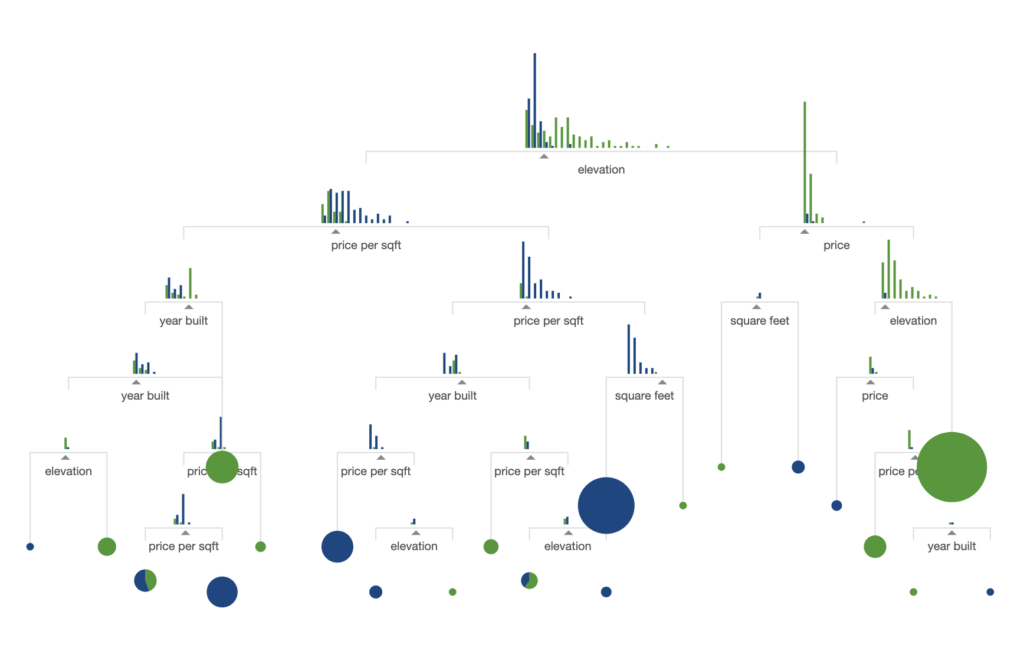Tony Chu

Our blog series, Featured Tectonauts, highlights the amazing characters we get to interact with daily here at Tecton. Want to join the team? Check out our open positions here.

What do you do at Tecton? What does your team do?
My name is Tony, and I am a product designer on the product team at Tecton. I am mostly focused on user experience and developer experience, which ranges from things like building interactive diagrams on the frontend, all the way to designing overarching user flows for upcoming product initiatives. This includes things like the user flow for registering data sources, debugging materialization jobs, and how users write Feature Views definitions.
What did you do before Tecton?
Before joining Tecton, I was a design manager at Facebook, on their AI Platform and Tools team. The team worked on UX for Facebook’s internal machine learning tooling – so a bit similar to the work that I am doing at Tecton now. Before Facebook, I worked at several different ML-focused companies in the Bay Area, where I worked on the UX of various ML or ML-enabled tools.

What led you toward a startup?
I really enjoy the experience of building things from the ground up. There’s an opportunity to rethink ideas and move quickly to get products off the ground. I had a great experience at Facebook, where I learned a ton and met a lot of great people. However, moving quickly at a large organization is often difficult and frustrating.
I also enjoy switching between different types of work, and It is easier (and encouraged) to do so start-ups. I have a bit of UI engineering background, and I often like to implement the designs I’m working on, like this one in Tecton’s docs. Sometimes you discover better designs through implementation that are hard to find using tools like Figma by itself. At larger companies, it is often hard to cross-discipline boundaries. Being at a start-up allows me to easily flex different muscles as the situation requires.
What’s your favorite software package or tool that you’ve ever used?
I’m going to have to say D3js. It is notoriously difficult to pick up, since it’s quite a low-level abstraction for rendering data as graphics on the web. Once you understand the paradigm though, it really unlocks amazing possibilities for looking at data in novel ways. I like to think of D3js as a way to define transformations from data into geometry. A large part of its API is about making those transformations easier. An example of a complex piece of visualization I’ve built with D3 is this visual introduction to machine learning. Incidentally, this is how the Tecton folks found me.

Perhaps if all you’re looking for are simple bar charts and line charts, D3js is a bit overkill, but if I am trying to use data to tell a story and need that extra bit of control and expressivity, D3js is the first tool I reach for.
What’s the most influential book you’ve ever read?
I’m going to cheat a bit and write about two books since the ways they influenced me were quite different.
Black Like Me – this was an account by John Howard Griffin on his journey through the American South while having his skin darkened, so that he could experience and record what racial segregation was like. I read this when I was quite young, and I still think that this was one of the most courageous and ingenious acts of journalism. The book opened my eyes to what prejudices still lingered in the world. I became much more aware of how I perceived and interacted with people, and also much more sensitive to casual injustices that minorities face.
Algorithms to Live By – this is a book by two computer scientists which looks at everyday life through the lens of computer science. E.g. the search for love through the lens of the secretary problem, or the problem of home organization through the lens of caching theory. It’s a great read that reveals how much of the problems we face day-to-day have a fundamentally computational nature. It made me look at how I spend my time, use my space, and my resources quite differently. One example is that I now spend much less time searching for the “perfect” thing when shopping – thanks to the 37% (or 1/e) rule.
Where do you think heaven on Earth is and why?
Tokyo. Wonderful food, interesting and varied culture, all on top of a world-class transportation infrastructure that allows you to go quickly from one spot to another. Not to mention the clean streets with kind and polite people. I have a list of spots I want to go eat at in Tokyo that will take a month to get through — and I am sure by the end the list would have grown. Top of the list now is Butagami 豚組 – their tonkatsu is amazing.


What’s the best swag you’ve ever received?
The swag I’ve gotten the most use out of would be a Patagonia wind jacket I got from Sift Science the first year I worked there. I still wear it most days when I go out during the winter, and it’s been seven years. That’s a pretty successful piece of swag.
